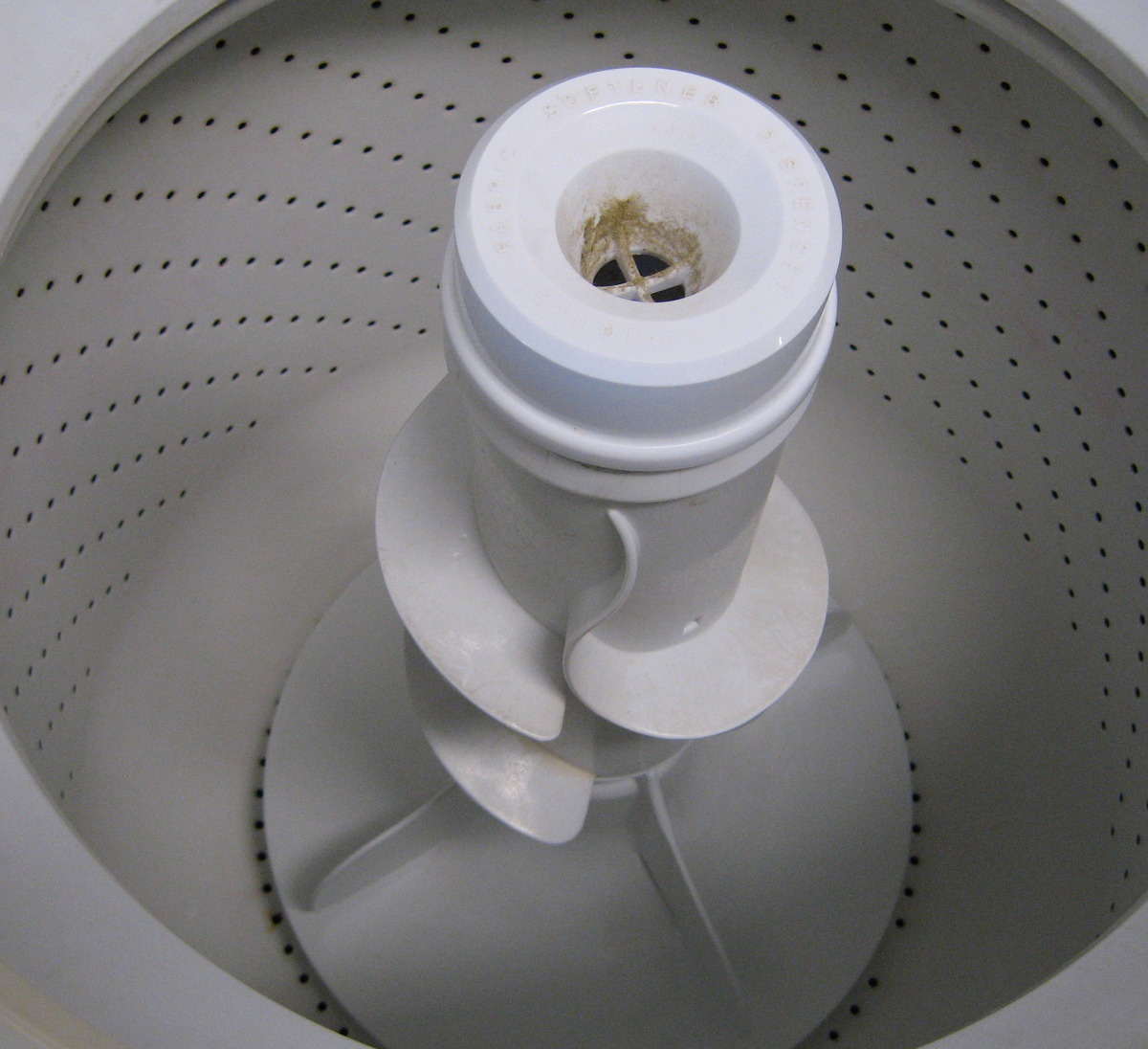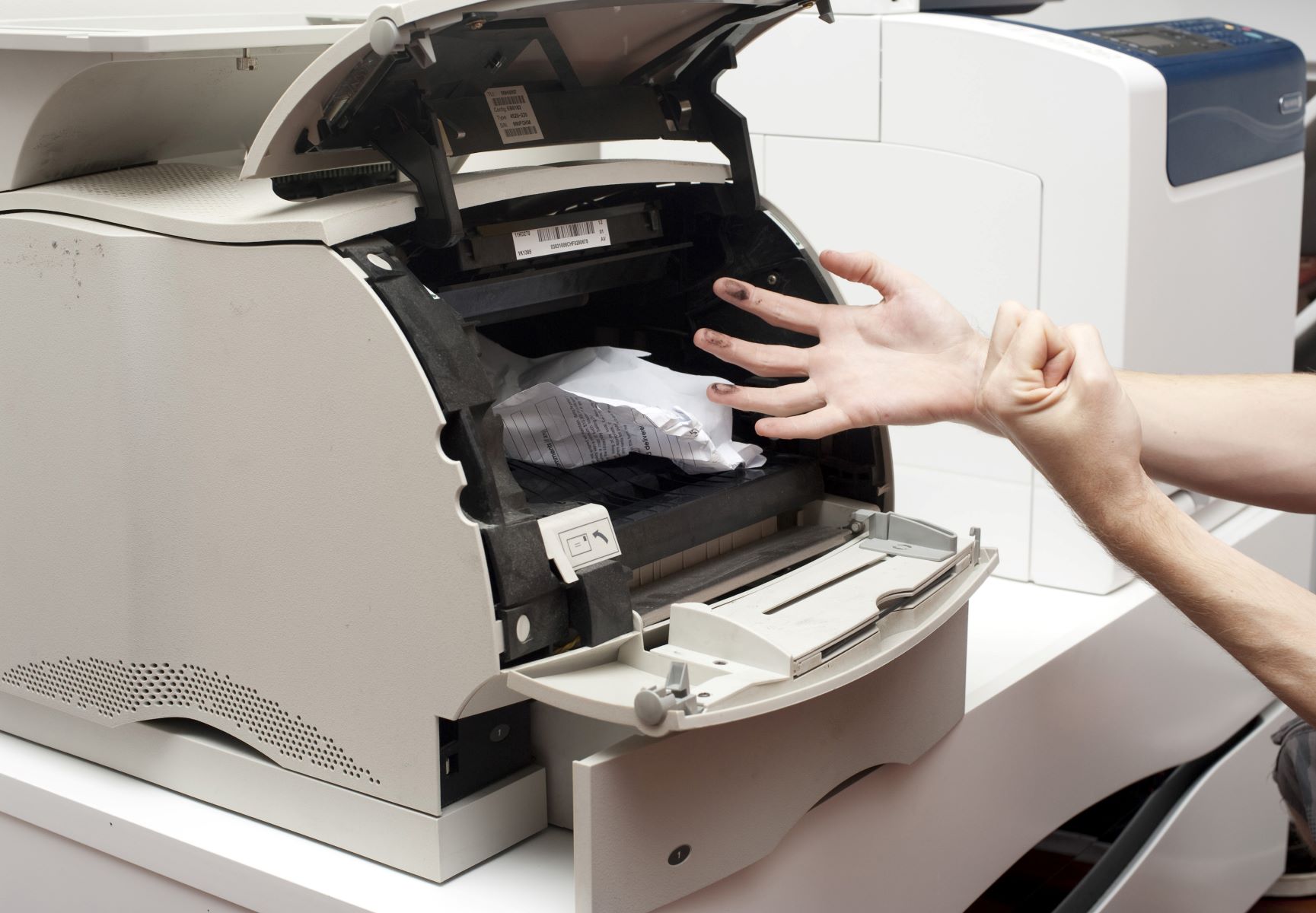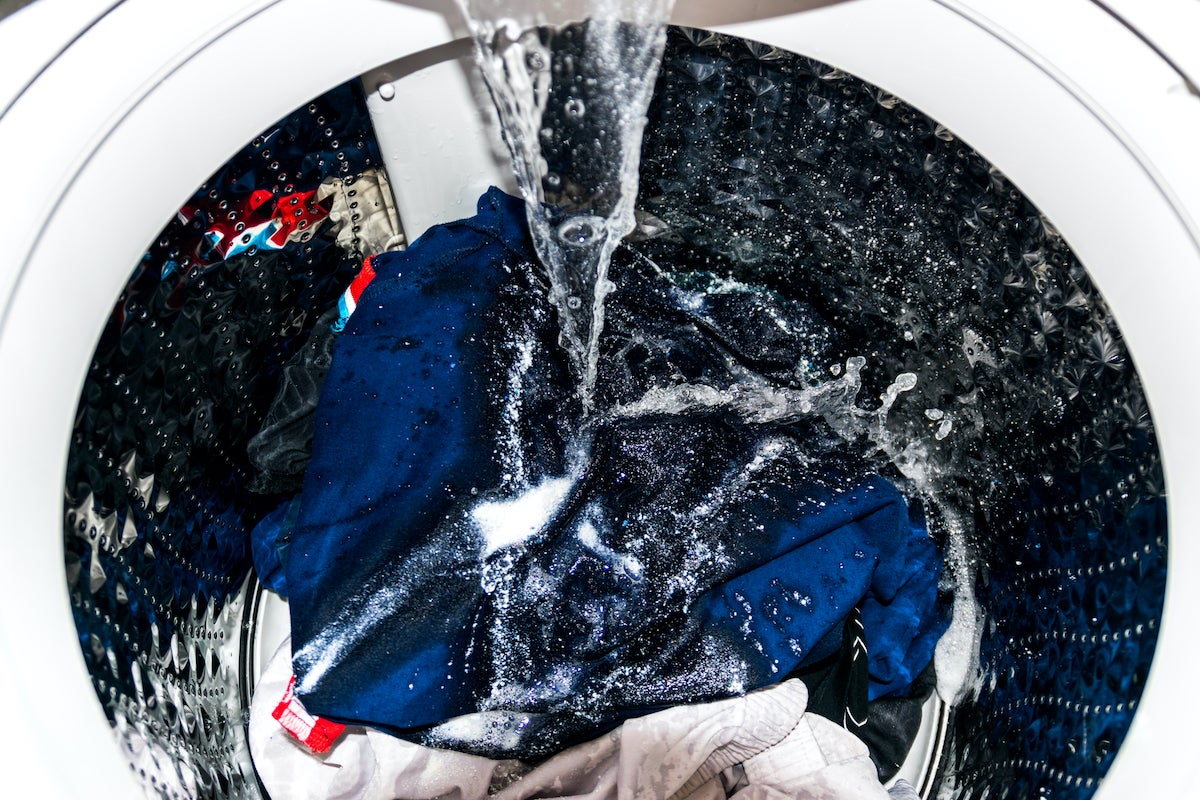Home>Furniture>Bedroom Furniture>Why Does My Blow-Up Mattress Keep Deflating


Bedroom Furniture
Why Does My Blow-Up Mattress Keep Deflating
Modified: October 18, 2024
Discover the reasons behind your constant deflating blow-up mattress and find solutions to keep it fully inflated. Explore our range of bedroom furniture for the perfect mattress replacement.
(Many of the links in this article redirect to a specific reviewed product. Your purchase of these products through affiliate links helps to generate commission for Storables.com, at no extra cost. Learn more)
Introduction
Are you frustrated with your blow-up mattress constantly deflating? Nothing can be more disappointing than preparing for a night of peaceful sleep only to find yourself waking up on a flat mattress. The inconvenience and discomfort can quickly put a damper on your camping trips or guest accommodations. But why does your blow-up mattress keep deflating?
In this article, we will explore the possible causes of deflation in blow-up mattresses and provide you with troubleshooting tips to help you find a solution. By understanding the common issues and implementing the right strategies, you can enjoy a longer-lasting and fully inflated mattress.
So, let’s dive in and uncover the reasons behind your deflating blow-up mattress.
Key Takeaways:
- Don’t let deflation deflate your enthusiasm! Regularly inspect for leaks, avoid overinflation, and store your blow-up mattress properly to maintain optimal inflation and extend its usability.
- Keep calm and troubleshoot on! Check the valve, consider temperature conditions, and contact the manufacturer if needed to address deflation issues and ensure a comfortable sleeping experience.
Read more: Why Is My Air Mattress Deflating
Possible Causes of Deflation
There are several factors that could contribute to the deflation of your blow-up mattress. Understanding these causes will help you diagnose the problem and take the necessary steps to fix it. Here are the most common reasons why your blow-up mattress keeps deflating:
- Leakage: One of the primary reasons for deflation is a leak in the mattress. Over time, tiny punctures or tears can develop, allowing air to escape gradually. Identifying and fixing these leaks is crucial for maintaining the mattress’s inflation.
- Inadequate Sealing: If the valve or sealing mechanism of your blow-up mattress is faulty or not properly closed, air can escape and cause deflation. Ensuring a tight seal is imperative to prevent air from leaking out.
- Overinflation: Overinflating the mattress can put undue pressure on the seams and weaken them over time. This can lead to air leakage, causing the mattress to deflate more quickly.
- Temperature Fluctuations: Extreme temperature changes can affect the air pressure inside the mattress. For example, cold temperatures can cause the air to contract, leading to deflation. It’s important to consider the environment and adjust the inflation accordingly.
- Material Wear and Tear: Continuous use of the blow-up mattress can cause wear and tear on the material, including the seams and fabric. As the material deteriorates, it becomes more susceptible to air leakage, resulting in deflation.
- Improper Storage: If the blow-up mattress is not stored correctly, it can be subjected to damage that leads to deflation. Folded or compressed storage can put stress on the material and weaken the seams, causing air to escape.
- Manufacturing Defects: In some cases, deflation may be the result of manufacturing defects in the blow-up mattress. This includes issues with the valve, seams, or overall construction of the mattress. If you suspect a defect, contacting the manufacturer is recommended.
These causes of deflation may vary from one blow-up mattress to another, depending on the quality, usage, and maintenance. It’s important to keep these factors in mind as we move on to troubleshooting tips to help you address the deflation problem.
Leakage
One of the most common causes of deflation in blow-up mattresses is a leakage. Over time, small punctures or tears can occur in the mattress, allowing air to slowly escape. These leaks can be caused by various factors, such as rough handling, sharp objects, or even pets accidentally scratching the mattress.
To identify and fix a leak, start by inflating the mattress to its maximum capacity. Once inflated, carefully inspect the entire surface of the mattress, paying close attention to seams, valves, and any visible or suspicious areas. You can use the following methods to locate leaks:
- Visual Inspection: Look for any visible punctures, holes, or tears on the mattress. Check the seams and valves thoroughly. If you notice any damage, mark the area with a marker or tape for later repair.
- Soap and Water Test: Mix a small amount of liquid soap with water and apply the soapy solution to the surface of the mattress, focusing on the suspected areas. If there is a leak, you will see bubbles forming at the site of the damage.
- Submerging Method: If you’re unable to locate the leak using visual inspection or the soap and water test, you can try submerging the mattress in water. Fill a bathtub or a large container with water and slowly submerge the mattress, watching for air bubbles rising to the surface. This method can help pinpoint the exact location of the leak.
Once you have identified the leaking area, you can proceed with repairing it. There are various repair kits available in the market specifically designed for blow-up mattress leaks. These kits typically include adhesive patches or sealants that can effectively seal the punctures or tears.
Before applying the repair solution, ensure that the mattress is completely dry and clean. Follow the instructions provided with the repair kit for the best results. Apply the adhesive patch or sealant over the leak, pressing it firmly and evenly onto the surface. Allow sufficient time for the repair to set and dry before re-inflating the mattress.
Regularly inspecting your blow-up mattress for leaks and promptly fixing them will help prevent deflation and extend the lifespan of the mattress. However, if you are unable to locate or repair the leaks yourself, consider seeking professional assistance or contacting the manufacturer for further guidance.
Inadequate Sealing
Another common cause of deflation in blow-up mattresses is inadequate sealing. If the valve or sealing mechanism is not properly closed or functioning correctly, air can escape and cause the mattress to deflate over time. Poor sealing can occur due to several reasons, such as wear and tear, damage, or improper usage.
To ensure proper sealing and prevent air leakage, follow these troubleshooting steps:
- Check the Valve: Inspect the valve of your blow-up mattress to ensure it is in good condition, free from any damage or debris. Make sure there are no cracks, tears, or loose components. If you notice any issues with the valve, consider replacing it with a compatible replacement valve recommended by the manufacturer.
- Tighten the Valve: If the valve is in good condition but still causing air leakage, it may simply be loose. Use a valve wrench or your fingers to tighten the valve securely. Be careful not to overtighten as it may damage the valve, leading to further issues.
- Apply Lubricant: In some cases, the valve might be sticking or not sealing properly due to friction. Apply a small amount of silicone lubricant to the valve mechanism, following the manufacturer’s recommendations. This can help improve the sealing and prevent air from escaping.
- Ensure Proper Closure: If your blow-up mattress has a cap or closure mechanism in addition to the valve, ensure that it is tightly closed after inflating. Double-check that all components are properly aligned and secured, leaving no gaps for air to escape.
By checking and maintaining a tight seal, you can significantly reduce the chances of deflation in your blow-up mattress. It’s also a good practice to periodically test the mattress’s inflation over time to ensure that the sealing mechanism is effectively preventing air leakage.
If you’ve followed these troubleshooting steps and the mattress still continues to deflate due to inadequate sealing, consider reaching out to the manufacturer for further assistance. They may be able to provide you with specific recommendations or offer a warranty replacement if the issue is due to a manufacturing defect.
Overinflation
Believe it or not, overinflation can actually contribute to the deflation of your blow-up mattress. When you inflate the mattress beyond its recommended capacity, you put excessive pressure on the seams and material. Over time, this can weaken the integrity of the mattress and cause air leakage.
To avoid overinflation and potential deflation, it’s important to follow the manufacturer’s guidelines for inflation. Here are some tips to ensure you don’t overinflate your blow-up mattress:
- Read the Instructions: Familiarize yourself with the inflation guidelines provided by the manufacturer. Take note of the recommended air pressure or firmness level for optimum comfort and longevity of the mattress.
- Use a Pump with Pressure Gauge: Invest in a pump that has a built-in pressure gauge. This will allow you to monitor and control the air pressure as you inflate the mattress. Stop inflating once you reach the desired pressure level.
- Don’t Rely on Manual Inflation: While manual inflation may be convenient, it’s more prone to overinflation. Instead, use an electric or battery-operated pump with pressure control for more accurate results.
- Check Firmness Regularly: Periodically check the firmness of your blow-up mattress. If it feels too firm or the seams are bulging, it may be a sign of overinflation. Release some air until it reaches a comfortable and appropriate firmness level.
By properly inflating your blow-up mattress within the recommended range, you can prevent excessive strain on the seams and material, reducing the risk of deflation. Remember that finding the ideal firmness is essential for both comfort and the longevity of the mattress.
If you’ve been overinflating your mattress on a regular basis, it’s possible that the seams may have already weakened or sustained damage. In such cases, refer to the previous section on leakage to identify and repair any leaks caused by overinflation.
By avoiding overinflation and maintaining proper air pressure, you can extend the lifespan of your blow-up mattress and enjoy uninterrupted nights of peaceful sleep.
Temperature Fluctuations
Temperature fluctuations can have a significant impact on the inflation and deflation of your blow-up mattress. Changes in temperature can affect the air pressure inside the mattress, causing it to either expand or contract. This can result in deflation if the air pressure decreases due to cold temperatures.
Here’s how you can manage temperature fluctuations to prevent deflation:
- Avoid Extreme Temperatures: Try to avoid placing your blow-up mattress in areas with extreme temperature conditions, such as direct sunlight or near heaters. Excessive heat or cold can have an adverse effect on the air pressure and cause deflation.
- Account for Temperature Changes: If you plan on using your blow-up mattress in environments with significant temperature changes, it’s important to account for this when inflating it. Inflate the mattress to a slightly higher air pressure when it is colder, as the air will contract when exposed to lower temperatures.
- Monitor and Adjust Inflation: Regularly check the firmness of your blow-up mattress during temperature changes. If you notice deflation or a significant decrease in air pressure, reinflate the mattress to the desired firmness level to compensate for the air contraction caused by the cold.
- Place Insulating Materials: When using your blow-up mattress in colder temperatures, consider placing insulating materials, such as blankets or foam pads, underneath the mattress. This can help insulate the mattress from the cold ground and minimize the effects of temperature fluctuations.
Being mindful of temperature fluctuations and taking appropriate precautions can help maintain the inflation and prevent deflation of your blow-up mattress. By adjusting the air pressure accordingly and providing insulation when needed, you can ensure a comfortable and inflated mattress regardless of the ambient temperature.
If deflation persists despite temperature management, it’s a good idea to inspect the mattress for leaks or other potential causes mentioned earlier in this article.
Material Wear and Tear
Continuous use of your blow-up mattress can lead to natural wear and tear, which can eventually result in deflation. The constant inflation and deflation, as well as the pressure exerted on the mattress during use, can weaken the material, including the seams and fabric. Over time, this wear and tear can cause air leakage and contribute to deflation.
Here are some tips to address and prevent deflation due to material wear and tear:
- Inspect for Damage: Regularly examine your blow-up mattress for any signs of wear, such as thinning fabric, frayed seams, or weakened areas. Pay close attention to high-stress areas, such as the edges, corners, and the top surface where most of your body weight is applied.
- Repair Small Tears: If you notice small tears or punctures in the material, it’s important to fix them promptly to prevent further damage. Use a repair kit specifically designed for blow-up mattresses and follow the instructions provided to patch up the affected areas.
- Avoid Sharp Objects: Be cautious of sharp objects or rough surfaces that can cause damage to your blow-up mattress. Remove any debris or objects from the area where you plan to use the mattress to minimize the risk of punctures or tears.
- Use Protection: Consider using a mattress protector or a fitted sheet to provide an extra layer of protection for your blow-up mattress. This can help reduce direct friction and minimize wear and tear on the surface of the mattress.
- Handle with Care: When inflating or deflating your blow-up mattress, handle it with care to avoid unnecessary stress on the material. Avoid forcefully pulling or pushing the mattress and be mindful of sharp objects or surfaces that could potentially cause damage.
By regularly inspecting your blow-up mattress for wear and tear and addressing any small damages promptly, you can greatly reduce the risk of deflation and prolong the lifespan of your mattress. Taking precautions and handling the mattress with care will ensure that it remains in good condition for future use.
If the wear and tear on your mattress are significant or if you notice larger tears or damage that cannot be easily repaired, it may be time to consider replacing the mattress to avoid ongoing issues with deflation.
Improper Storage
Improper storage of your blow-up mattress can contribute to deflation and damage over time. Folding or compressing the mattress incorrectly can put unnecessary stress on the material and weaken the seams, resulting in air leakage and deflation. It’s important to store your blow-up mattress properly to maintain its integrity and prolong its lifespan.
Follow these guidelines to ensure proper storage of your blow-up mattress:
- Clean and Dry: Before storing your mattress, make sure it is clean and completely dry. Remove any dirt, debris, or moisture by wiping it down with a damp cloth and allowing it to air dry fully.
- Deflate Completely: Before folding or rolling up your blow-up mattress, ensure that it is fully deflated. This will prevent unnecessary strain on the valves and seams, minimizing the risk of damage during storage.
- Avoid Sharp Surfaces: Choose a storage location that is free of sharp objects or surfaces that could potentially puncture or damage the mattress. Keep it away from areas with protruding edges or rough textures.
- Follow Folding Instructions: Refer to the manufacturer’s instructions for the recommended folding method. Some blow-up mattresses come with their own storage bags or straps, which can help you fold and secure the mattress properly.
- Don’t Over-compress: Avoid excessive compression or tight folding of the mattress, as this can strain the material and lead to creases or folds that may cause air leakage. Aim for a size that comfortably fits in the designated storage space without putting excessive pressure on the mattress.
- Store in a Dry Area: Choose a cool, dry storage area for your blow-up mattress. Moisture can promote mold or mildew growth, which can damage the material and lead to deflation. Consider using a breathable storage bag to protect the mattress from dust and potential moisture.
By storing your blow-up mattress properly, you can minimize the risk of deflation and extend its usability. Taking a little extra care when storing the mattress will ensure that it remains in good condition and ready to use whenever needed.
Remember to inspect and reinflate the mattress before every use, even after proper storage, to ensure that it is in optimal condition and maintain the desired firmness for a comfortable sleeping experience.
Manufacturing Defects
In some cases, deflation in your blow-up mattress can be attributed to manufacturing defects. Despite quality control measures, there is always a possibility of errors or issues with the production process that can affect the functionality of the mattress. These defects can include problems with the valve, seams, or overall construction of the mattress.
If you suspect that your blow-up mattress has a manufacturing defect leading to deflation, here are some steps you can take:
- Contact the Manufacturer: Reach out to the manufacturer of your blow-up mattress and explain the issue you are experiencing. Provide them with details about the defect and any relevant information, such as the date of purchase and model number. They may be able to offer guidance or provide a warranty replacement.
- Provide Evidence: If possible, document the defect by taking clear pictures or videos that clearly show the issue. This visual evidence can help support your claim when discussing the defect with the manufacturer.
- Follow Warranty Procedures: If your blow-up mattress is still within the warranty period, review the warranty terms and requirements. Follow the procedures outlined by the manufacturer for warranty claims, such as providing proof of purchase or returning the mattress for inspection.
- Seek Professional Assessment: If the manufacturer is unresponsive or dismissive of your concerns, consider seeking a professional assessment from an expert in mattress repair or inspection. They can provide an objective evaluation of the defect and offer suggestions for repair or further action.
Manufacturing defects are relatively rare, but they can occur. Addressing the issue with the manufacturer or seeking professional assistance can help determine if the deflation is indeed due to a defect in the mattress.
Keep in mind that not all deflation issues are necessarily due to manufacturing defects. It’s important to rule out other potential causes, such as leakage or improper usage, before concluding that the problem lies with the manufacturing.
By being proactive and taking the necessary steps to address potential manufacturing defects, you can ensure that you receive a functional and reliable blow-up mattress that meets your expectations.
Check for any visible punctures or tears in the mattress. Use soapy water to identify leaks by applying it to the mattress and looking for bubbles. Patch any holes with a repair kit to prevent further deflation.
Read more: Why Does My Plumbing Keep Backing Up
Troubleshooting Tips
Now that we’ve explored the possible causes of deflation in blow-up mattresses, let’s delve into some troubleshooting tips to help you address the issue and maintain optimal inflation. These tips can help you pinpoint the problem and find a suitable solution:
- Inspect for Leaks: Use the methods mentioned earlier to inspect your blow-up mattress for leaks. Check the surface, seams, and valves for any signs of damage or air leakage. Repair any found leaks promptly using a repair kit.
- Check the Valve and Sealing Mechanism: Ensure that the valve is in good condition, tightly sealed, and functioning properly. Tighten the valve if necessary and consider applying a silicone lubricant to improve sealing.
- Avoid Overinflating: Follow the manufacturer’s guidelines for inflation and avoid overinflating the mattress. Use a pump with a pressure gauge to accurately inflate the mattress to the recommended air pressure.
- Consider Temperature Conditions: Be mindful of temperature fluctuations and adjust the inflation of the mattress accordingly. In colder temperatures, slightly overinflate to compensate for the air contraction caused by the cold.
- Examine the Material for Wear and Tear: Regularly inspect the blow-up mattress for signs of wear, tears, or damage. Repair small tears promptly and avoid exposing the mattress to sharp objects or rough surfaces.
- Store Properly: Store the blow-up mattress in a clean, dry area. Properly deflate, fold, and avoid excessive compression during storage to prevent strain on the material and potential deflation.
- Contact the Manufacturer: If you suspect a manufacturing defect, reach out to the manufacturer. Provide them with details, evidence, and follow their warranty procedures if applicable.
By following these troubleshooting tips, you can identify and address the underlying causes of deflation in your blow-up mattress. Remember to consider these tips collectively and not solely rely on one solution, as multiple factors can contribute to the deflation issue.
If you’ve exhausted these troubleshooting tips and are still experiencing persistent deflation, it may be beneficial to consult a professional mattress repair service or consider replacing the mattress if it is beyond repair.
Remember, a well-maintained and properly inflated blow-up mattress will provide you with comfortable sleep and enjoyable outdoor adventures for years to come.
Inspect for Leaks
When your blow-up mattress keeps deflating, one of the first troubleshooting steps is to inspect it for leaks. Air leakage is a common cause of deflation and can occur due to small punctures or tears in the material. By identifying and fixing these leaks, you can maintain proper inflation and prolong the lifespan of your mattress.
Here’s how you can inspect your blow-up mattress for leaks:
- Inflate the Mattress: Start by fully inflating your blow-up mattress to its maximum capacity. This will help you identify any significant leaks or areas where air is escaping.
- Visual Inspection: Carefully examine the surface of the mattress, paying close attention to the seams, valves, and any suspicious areas. Look for visible punctures, holes, or tears. Mark the locations with a marker or tape for later repair.
- Soap and Water Test: Mix a small amount of liquid soap with water and apply the soapy solution to the surface of the mattress, focusing on the suspected areas. Look for bubbles forming at the site of the leak. If you see bubbles, it indicates air leakage.
- Submerging Method: If you’re unable to locate the leak using visual inspection or the soap and water test, you can try the submerging method. Fill a bathtub or a large container with water and slowly submerge the mattress, watching for air bubbles rising to the surface. This method can help pinpoint the exact location of the leak.
Once you have identified the leaking area, you can proceed with repairing it. Most blow-up mattress repair kits come with adhesive patches or sealants specifically designed for this purpose.
To repair a leak in your blow-up mattress, follow these steps:
- Clean and Dry the Surface: Ensure that the area around the leak is clean and completely dry. Use a cloth or sponge to remove any dirt or moisture.
- Apply the Repair Solution: Depending on the type of repair kit you have, follow the instructions provided. It may involve applying adhesive patches or using sealants. Apply the solution directly over the leak, pressing it firmly and evenly onto the surface.
- Allow for Drying Time: Give the repair solution sufficient time to dry and set. Consult the instructions to determine the recommended duration. Avoid inflating the mattress until the repair is fully dried to ensure a strong and effective seal.
Regularly inspecting your blow-up mattress for leaks and promptly fixing them will help prevent deflation and maintain proper inflation. However, if you are unable to locate or repair the leaks yourself, consider seeking professional assistance or contacting the manufacturer for further guidance.
Check the Valve and Sealing Mechanism
Another crucial troubleshooting step when your blow-up mattress keeps deflating is to check the valve and sealing mechanism. A faulty valve or improper sealing can cause air to escape, resulting in deflation over time. By ensuring that the valve is in good condition and properly sealed, you can prevent unnecessary air leakage and maintain the inflation of your mattress.
Here’s how to check the valve and sealing mechanism of your blow-up mattress:
- Inspect the Valve: Begin by examining the valve of your blow-up mattress. Look for any visible signs of damage, such as cracks, tears, or loose components. Make sure the valve is clean and free from debris. If you notice any issues with the valve, consider replacing it with a compatible replacement valve recommended by the manufacturer.
- Tighten the Valve: If the valve is in good condition but still causes air leakage, it may simply be loose. Use a valve wrench or your fingers (if possible) to tighten the valve securely. Be careful not to overtighten, as it may damage the valve, leading to further issues.
- Apply Lubricant: In some cases, the valve might be sticking or not sealing properly due to friction. Apply a small amount of silicone lubricant to the valve mechanism, following the manufacturer’s recommendations. This can help improve the sealing and prevent air from escaping.
- Ensure Proper Closure: If your blow-up mattress has a cap or closure mechanism in addition to the valve, ensure that it is tightly closed after inflating. Double-check that all components are properly aligned and secured, leaving no gaps for air to escape.
By checking the valve and sealing mechanism, you can address any potential issues that may lead to deflation. It’s important to note that valves can vary among different blow-up mattresses, so refer to the manufacturer’s instructions or guidelines for specific valve maintenance tips.
If you’ve followed these troubleshooting steps and the mattress still continues to deflate due to inadequate sealing, consider reaching out to the manufacturer for further assistance. They may be able to provide you with specific recommendations or offer a warranty replacement if the issue is due to a manufacturing defect.
Avoid Overinflating
When dealing with a blow-up mattress that keeps deflating, it’s important to consider the inflation level. Overinflating the mattress can put excessive pressure on the seams and material, leading to strain and potential air leakage. By avoiding overinflation, you can prevent unnecessary stress on the mattress and maintain its optimal inflation for a longer period of time.
Here are some tips to help you avoid overinflating your blow-up mattress:
- Read the Instructions: Familiarize yourself with the inflation guidelines provided by the manufacturer. Take note of the recommended air pressure or firmness level for optimum comfort and longevity of the mattress.
- Use a Pump with Pressure Gauge: To accurately inflate the mattress, use a pump that has a built-in pressure gauge. This will allow you to monitor and control the air pressure as you inflate. Stop inflating once you reach the desired pressure level recommended by the manufacturer.
- Don’t Rely on Manual Inflation: While manual inflation may be convenient, it’s more prone to overinflation. Instead, use an electric or battery-operated pump with pressure control for more accurate results.
- Check Firmness Regularly: Periodically check the firmness of your blow-up mattress during use. If it feels excessively firm or the seams are bulging, it may be a sign of overinflation. Release some air until it reaches a comfortable and appropriate firmness level.
By following these tips, you can prevent overinflation and maintain the ideal air pressure in your blow-up mattress. It’s important to find the right balance between comfort and firmness without putting excessive strain on the mattress and its components.
If you’ve been consistently overinflating your mattress, it’s possible that the seams may have already weakened or sustained damage. In such cases, refer to the earlier tips on inspecting for leaks and addressing any repairs needed due to overinflation.
Remember, proper inflation is crucial for the longevity and functionality of your blow-up mattress. By avoiding overinflation and adhering to recommended air pressure guidelines, you can enjoy a consistently inflated and comfortable mattress for all your sleeping or camping needs.
Read more: Why Does My Heat Lamp Bulb Keep Blowing
Consider Temperature Conditions
Temperature fluctuations can have a significant impact on the inflation and deflation of your blow-up mattress. Changes in temperature can cause the air inside the mattress to expand or contract, leading to deflation if the air pressure decreases due to cold temperatures. To prevent deflation caused by temperature changes, it’s important to consider and accommodate the temperature conditions when inflating and using your blow-up mattress.
Here are some tips to help you manage temperature fluctuations:
- Avoid Extreme Temperatures: Try to avoid placing your blow-up mattress in areas with extreme temperature conditions, such as direct sunlight or near heaters. Excessive heat or cold can have an adverse effect on the air pressure, potentially causing deflation.
- Account for Temperature Changes: If you plan on using your blow-up mattress in environments with significant temperature variations, it’s important to account for this when inflating it. Inflate the mattress to a slightly higher air pressure when it is colder, as the air will contract when exposed to lower temperatures.
- Monitor and Adjust Inflation: Regularly check the firmness of your blow-up mattress during temperature changes. If you notice deflation or a significant decrease in air pressure, consider reinflating the mattress to the desired firmness level to compensate for the air contraction caused by the cold.
- Place Insulating Materials: When using your blow-up mattress in colder temperatures, consider placing insulating materials, such as blankets or foam pads, underneath the mattress. This can help insulate the mattress from the cold ground and minimize the effects of temperature fluctuations.
Being mindful of temperature fluctuations and taking appropriate precautions can help maintain the inflation and prevent deflation of your blow-up mattress. It’s important to note that the impact of temperature can vary depending on the quality and type of material used in your mattress.
If deflation persists despite temperature management, it’s a good idea to inspect the mattress for leaks or other potential causes mentioned earlier in this article. By addressing any underlying issues correctly, you can ensure that your blow-up mattress remains properly inflated and comfortable, regardless of temperature changes.
Examine the Material for Wear and Tear
Continuous use of your blow-up mattress can lead to natural wear and tear, which can eventually result in deflation. The constant inflation and deflation, as well as the pressure exerted on the mattress during use, can weaken the material, including the seams and fabric. Over time, this wear and tear can cause air leakage and contribute to deflation.
To prevent deflation caused by material wear and tear, here are some steps to examine the condition of your blow-up mattress:
- Regular Inspection: Take the time to regularly inspect your blow-up mattress for signs of wear and tear. Look for thinning fabric, frayed seams, or weakened areas. Pay close attention to high-stress areas such as the edges, corners, and the top surface where most of your body weight is applied.
- Repair Small Tears: If you notice small tears or punctures in the material, it’s important to fix them promptly to prevent further damage. Use a repair kit specifically designed for blow-up mattresses and follow the instructions provided to patch up the affected areas.
- Avoid Sharp Objects: Be cautious of sharp objects or rough surfaces that can cause damage to your blow-up mattress. Remove any debris or objects from the area where you plan to use the mattress to minimize the risk of punctures or tears.
- Use Protection: Consider using a mattress protector or a fitted sheet to provide an extra layer of protection for your blow-up mattress. This can help reduce direct friction and minimize wear and tear on the surface of the mattress.
- Handle with Care: When inflating or deflating your blow-up mattress, handle it with care to avoid unnecessary stress on the material. Avoid forcefully pulling or pushing the mattress and be mindful of sharp objects or surfaces that could potentially cause damage.
By regularly examining the material for wear and tear and taking appropriate steps to repair and protect it, you can minimize the risk of deflation in your blow-up mattress. It’s important to address any small damages promptly before they worsen and potentially lead to larger leaks or tears.
Remember, prevention is key when it comes to managing wear and tear. By being proactive in maintaining the condition of your blow-up mattress, you can ensure its functionality and longevity for many nights of comfortable sleep and outdoor adventures.
Store Properly
Proper storage is essential for maintaining the integrity of your blow-up mattress and preventing deflation. Incorrect storage practices can lead to unnecessary stress on the material, weakening of the seams, and potential air leakage. By storing your blow-up mattress properly, you can ensure its longevity and keep it ready for use whenever you need it.
Here are some tips for proper storage of your blow-up mattress:
- Clean and Dry: Before storing your blow-up mattress, make sure it is clean and completely dry. Clean the surface with a damp cloth or sponge to remove any dirt or debris. Allow it to air dry fully to prevent the growth of mold or mildew.
- Deflate Completely: To avoid unnecessary strain on the valves and material, ensure that your blow-up mattress is fully deflated before storage. This will prevent potential damage due to pressure or folding.
- Avoid Sharp Surfaces: Choose a storage location that is free of sharp objects or surfaces that could potentially puncture or damage the mattress. Keep it away from areas with protruding edges or rough textures.
- Follow Folding Instructions: Refer to the manufacturer’s instructions for the recommended folding method. Some blow-up mattresses come with their own storage bags or straps, which can help you fold and secure the mattress properly. Follow these guidelines to minimize stress on the material and prevent deflation.
- Don’t Over-compress: Avoid excessive compression or tight folding of the mattress during storage, as this can strain the material and lead to creases or folds that may cause air leakage. Aim for a size that comfortably fits in the designated storage space without putting excessive pressure on the mattress.
- Store in a Dry Area: Choose a cool, dry storage area for your blow-up mattress. Moisture can promote the growth of mold or mildew, which can damage the material and lead to deflation. Consider using a breathable storage bag to protect the mattress from dust and potential moisture.
By following these storage recommendations, you can maintain the condition of your blow-up mattress and prevent issues with deflation. Proper storage practices will ensure that your mattress remains in good shape and ready to use whenever you need it.
Remember to inspect and reinflate the mattress before every use, even after proper storage, to ensure that it is in optimal condition and maintains the desired firmness for a comfortable sleeping experience.
Contact the Manufacturer
If you’ve followed the previous troubleshooting tips and your blow-up mattress continues to deflate persistently, it may be time to contact the manufacturer. They can provide valuable guidance and support in addressing the issue, especially if it stems from a manufacturing defect or quality-related problem.
Here are the steps you can take when contacting the manufacturer:
- Reach Out: Begin by contacting the manufacturer of your blow-up mattress. Look for their customer service contact information on their website, product packaging, or warranty documentation.
- Explain the Issue: Clearly describe the problem you are experiencing with your blow-up mattress. Provide details such as the frequency of deflation, any troubleshooting steps you have already taken, and when the issue started. Being specific will help the manufacturer understand the problem better.
- Provide Documentation: If possible, provide visual evidence of the deflating mattress. Take clear pictures or videos that clearly show the problem. This documentation can strengthen your case and help the manufacturer better understand the issue.
- Warranty Information: If your blow-up mattress is still within the warranty period, review the warranty documentation provided by the manufacturer. Follow the procedures outlined for warranty claims, such as providing proof of purchase or returning the mattress for inspection.
- Follow Manufacturer’s Instructions: Listen carefully to the instructions provided by the manufacturer. They may offer troubleshooting suggestions or ask you to complete specific forms or processes to resolve the issue.
- Be Patient: It’s important to note that the resolution process may take time. Be patient and maintain open communication with the manufacturer to ensure a satisfactory resolution.
By contacting the manufacturer, you demonstrate your commitment to resolving the deflation issue effectively. They are in the best position to assess and address any manufacturing defects or quality-related concerns with the blow-up mattress.
If the manufacturer is unresponsive or dismissive of your concerns, consider seeking a professional assessment from an expert in mattress repair or inspection. They can provide an objective evaluation of the defect and offer suggestions for repair or further action.
Remember, addressing the deflation issue with the manufacturer is crucial for your consumer rights and obtaining a resolution that aligns with the warranty provided. Be persistent and advocate for a satisfactory resolution to ensure your satisfaction with the product.
Read more: What Is The Best Blow-Up Mattress
Conclusion
Dealing with a blow-up mattress that keeps deflating can be frustrating, but with the right troubleshooting steps, you can address the issue and enjoy uninterrupted comfort during your sleep or camping adventures. By considering the possible causes of deflation and following the appropriate solutions, you can effectively maintain the inflation and prolong the lifespan of your blow-up mattress.
We explored several common causes of deflation, including leakage, inadequate sealing, overinflation, temperature fluctuations, material wear and tear, improper storage, and manufacturing defects. By inspecting for leaks, checking the valve and sealing mechanism, avoiding overinflation, considering temperature conditions, examining the material for wear and tear, storing the mattress properly, and contacting the manufacturer if necessary, you can troubleshoot and resolve the deflation issue.
Remember to use the appropriate methods for inspecting and repairing leaks, handle the mattress with care, and store it in a cool, dry place to prevent unnecessary strains or damage. Adhering to these guidelines will help keep your blow-up mattress in optimal condition and extend its usability.
If you’ve exhausted all troubleshooting options and the deflation problem persists, consider seeking professional assistance or contacting the manufacturer. They can offer further guidance, explore potential warranty coverage, or provide insights into any manufacturing defects that may be contributing to the issue.
By following these troubleshooting tips and contacting the manufacturer when needed, you can maintain a fully inflated blow-up mattress and enjoy a comfortable sleeping experience every time. Don’t let deflation deflate your enthusiasm – take control of the situation and get back to relaxing and restful sleep!
Frequently Asked Questions about Why Does My Blow-Up Mattress Keep Deflating
Was this page helpful?
At Storables.com, we guarantee accurate and reliable information. Our content, validated by Expert Board Contributors, is crafted following stringent Editorial Policies. We're committed to providing you with well-researched, expert-backed insights for all your informational needs.











